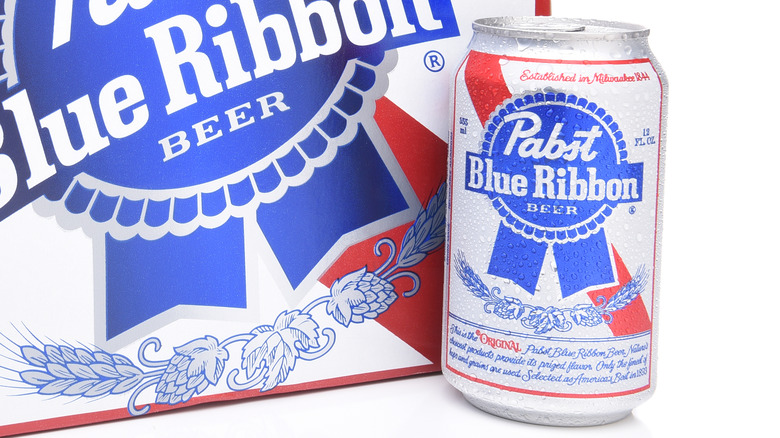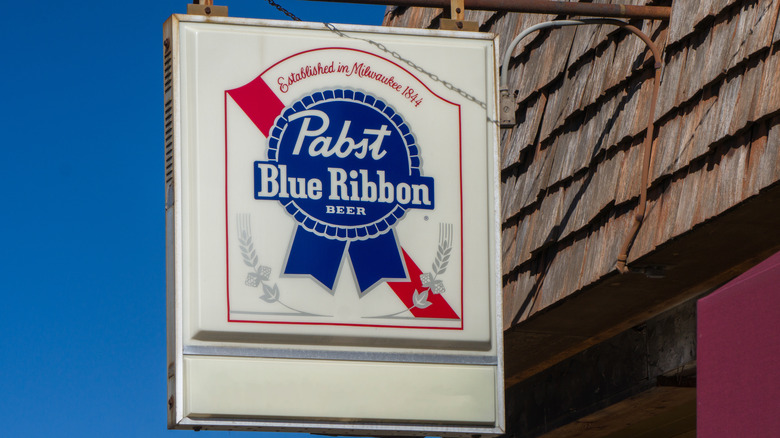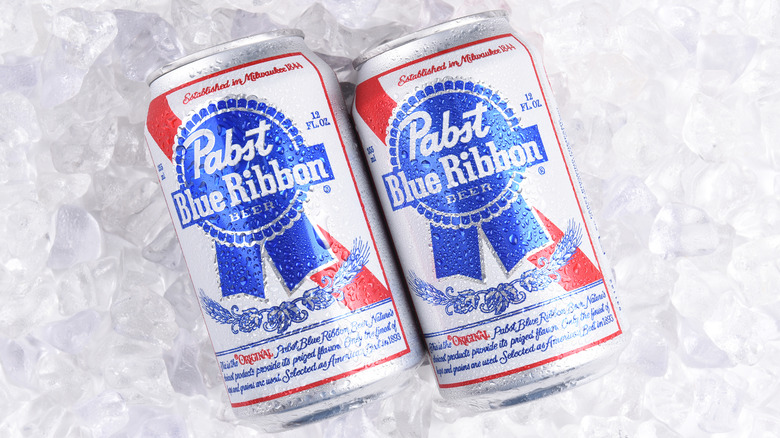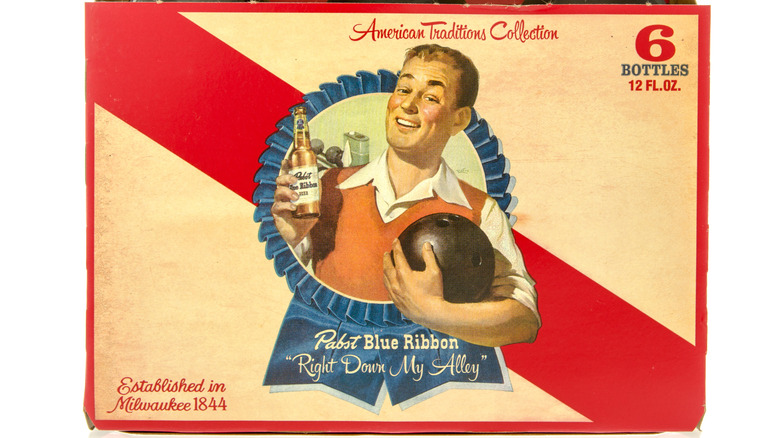How WWI Changed Pabst Blue Ribbon
Despite having a rather lackluster reputation among beer lovers, Pabst Blue Ribbon, known by its acronymic nickname PBR, has somehow managed to remain one of the top five brewing companies in the United States, according to the Brewer's Association. Whether this is due to its reasonable price, its mild (or for some, watery) taste, or some unknown factor is anybody's guess. Nevertheless, we can establish that despite the many ups and downs in its history, Pabst Brewing has shown a tenacious ability to survive when others failed, and has remained a favorite beer in many states.
The Pabst Blue Ribbon website tells us that a man named Jacob Best first established the company in 1844, initially naming it Empire Brewery; since then, the 180-year history of Pabst Brewing has closely mirrored that of the country itself. The company has survived and thrived through peace, war, and even prohibition. Let's look at how political changes and WWI, more than market factors, have helped drive the history of Pabst Blue Ribbon.
The early history of Pabst Blue Ribbon
According to Pabst Blue Ribbon, Empire Brewery was first established in 1844 by a German immigrant named Jacob Best, as well as Best's sons. If you look at the official Pabst website, however, they list 1844 and 1848 as their first years of operation. (We were unable to establish why this discrepancy exists.) Despite the uncertainty surrounding PBR's entrée into the world of brewing, In the long run, it makes little difference. What's clear is that the business became a success. Their early brewing efforts were limited to 18 barrels of what they called Best Select Lager — but by 1872 production had grown to over 100,000 barrels a year. The Pabst name had entered the picture.
The daughter of Phillip Best, one of the early partners, married Frederick Pabst, a Great Lakes steamboat captain, in 1862, according to the Wisconsin Historical Society. Captain Pabst soon sold off his shipping interest and bought into the brewery at the urging of his father-in-law. He became the president of the company in 1872, according to the Pabst website history page.
Where did Pabst Blue Ribbon get its name
Though the formulation of America's third oldest beer brand has changed little over the years, since its founding the name of what we know now as Pabst constantly evolved. From Empire to Best's, many owners had hung their moniker on the company signs. According to the company website, It wasn't until 1889 that Captain Pabst followed suit and changed the name to Pabst Brewing Company.
Strange as it may seem, though, the company's signature beer was already known as "Blue Ribbon." According to the Pabst official company website, their beer had already won awards at home and abroad for some time before Pabst added his name. To help advertise this fact, the company began adding hand-tied blue ribbons to its bottles in 1882. It was only natural that patrons started asking for a Blue Ribbon when ordering.
While ribbons on bottles may seem unnecessary and extravagant, these were very different times. The National Center for Educational Statistics reports that as many as one in five adults were completely illiterate before and right after the turn of the 20th century. By all accounts, companies had their products embossed with an emblem or marked in some other way to make them easily distinguishable.
Smithsonian magazine tells us that Pabst's Best Select (also known as PBS) was commonly referred to as Blue Ribbon before the 1893 World Exposition in Chicago. However, this was the crowing jewel of the many accolades that Pabst had received. From that time forward, the company referred to it as PBR or Pabst Blue Ribbon.
Why did the real blue ribbon disappear from Pabst bottles
World War I is the short answer to why Pabst Blue Ribbon quit tying genuine silk ribbons around their bottles. In 1917, when the U.S. entered the war, we were a much younger and less capable country, according to a research paper written by historian Kashia Amber Arnold of UC Santa Barbara. As she explains it, the U.S. at the time only controlled 8% of global shipping traffic; in the Pacific, our merchant marines only accounted for 2% of the world's cargo "tonnage." Japan, also in the Pacific, was the leading supplier of silk to the United States.
Under these circumstances, the U.S. had to prioritize all shipping to meet the war effort's needs. Unfortunately, for Pabst, silk ribbon was considered a luxury textile and wasn't very high on the priority list. Naturally, a shortage developed, and prices soared. Smithsonian magazine reports that Pabst was using a million feet of ribbon each year on its bottles by this time. Needless to say, with supplies running short and prices climbing, this level of consumption was not sustainable.



